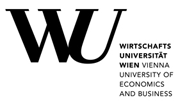Department of Economics Working Papers,
Vienna University of Economics and Business, Department of Economics
No 276: Model instability in predictive exchange rate regressions
Niko Hauzenberger () and Florian Huber ()
Additional contact information
Niko Hauzenberger: Vienna University of Economics and Business, Department of Economics
Florian Huber: Paris Lodron University of Salzburg, Salzburg Centre of European Union Studies
Abstract: In this paper we aim to improve existing empirical exchange rate models by accounting for uncertainty with respect to the underlying structural representation. Within a flexible Bayesian non-linear time series framework, our modeling approach assumes that different regimes are characterized by commonly used structural exchange rate models, with their evolution being driven by a Markov process. We assume a time-varying transition probability matrix with transition probabilities depending on a measure of the monetary policy stance of the central bank at the home and foreign country. We apply this model to a set of eight exchange rates against the US dollar. In a forecasting exercise, we show that model evidence varies over time and a model approach that takes this empirical evidence seriously yields improvements in accuracy of density forecasts for most currency pairs considered.
Keywords: Empirical exchange rate models, exchange rate fundamentals, Markov switching
JEL-codes: C30; E32; E52; F31 December 2018
Note: PDF Document
Full text files
wp276.pdf
Report problems with accessing this service to Sune Karlsson ().
RePEc:wiw:wiwwuw:wuwp276This page generated on 2025-09-20 04:36:36.

